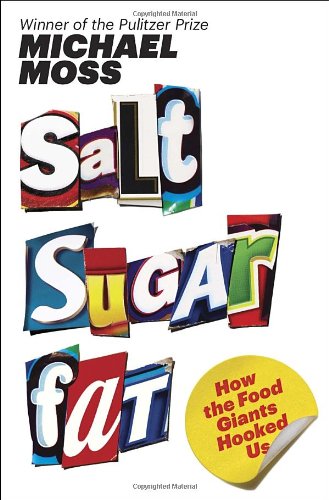Salt Sugar Fat: How the Food Giants Hooked Us / Moss, Michael
| List Price: | |
Our Price: $9.90 | |
|
For Bulk orders
| |
|
Used Book Price: | |
| Salt Sugar Fat: How the Food Giants Hooked Us / Moss, Michael | |
| Publisher: Random House | |
| Availability:In Stock. | |
| Sales Rank: 187208 | |
|
Similar Books
Q&A with Michael Moss

Q. How did you land on salt, sugar, and fat as your way to write about the industry? Why these three ingredients?
A. I’d been investigating a surge in deadly outbreaks of E. coli in meat when an industry source, a microbiologist, suggested that if I wanted to see an even bigger public health hazard, I should look at what food companies were intentionally adding to their products, starting with salt. And sure enough, when I looked at this--by gaining access to high level industry officials and a trove of sensitive, internal records--a window opened on how aggressive the industry was wielding not only salt, but sugar and fat, too. These are the pillars of processed foods, the three ingredients without which there would be no processed foods. Salt, sugar and fat drive consumption by adding flavor and allure. But surprisingly, they also mask bitter flavors that develop in the manufacturing process. They enable these foods to sit in warehouses or on the grocery shelf for months. And, most critically to the industry's financial success, they are very inexpensive.
Q. So, how big is the processed food industry, exactly? What kind of scale are we talking about here?
A. Huge. Grocery sales now top $1 trillion a year in the U.S., with more than 300 manufacturers employing 1.4 million workers, or 12 percent of all American manufacturing jobs. Global sales exceed $3 trillion. But the figure I find most revealing is 60,000: That’s the number of different products found on the shelves of our largest supermarkets.
Q. How did this get so big?
A. The food processing industry is more than a century old--if you count the invention of breakfast cereals--so it’s been steady growth. But things really took off in the 1950s with the promotion of convenience foods whose design and marketing was aimed at the increasing numbers of families with both parents working outside the home. The industry's expansion, since then, has been entirely unrestrained. While food safety is heavily regulated, the government has been industry's best friend and partner in encouraging Americans to become more dependent on processed foods.
Q. What three things should a health-conscious supermarket shopper keep in mind?
A. The most alluring products--those with the highest amounts of salt, sugar and fat--are strategically placed at eye-level on the grocery shelf. You typically have to stoop down to find, say, plain oatmeal. (Healthier products are generally up high or down low.) Companies also play the better-nutrition card by plastering their packaging with terms like "all natural," "contains whole grains," “contains real fruit juice,” and "lean," which belie the true contents of the products. Reading labels is not easy. Only since the 1990s have the manufacturers even been required to reveal the true salt, sugar, fat and caloric loads of their products, which are itemized in a box called the "nutrient facts." But one game that many companies still play is to divide these numbers in half, or even thirds, by reporting this critical information per serving--which are typically tiny portions. In particular, they do this for cookies and chips, knowing that most people can't resist eating the entire three-serving bag. Check it out sometime. See how many “servings” that little bag of chips contains.
Now you can buy Books online in USA,UK, India and more than 100 countries.
*Terms and Conditions apply
Disclaimer: All product data on this page belongs to
 .
.No guarantees are made as to accuracy of prices and information.










